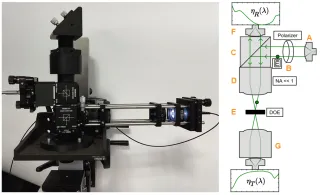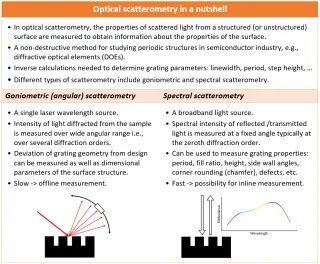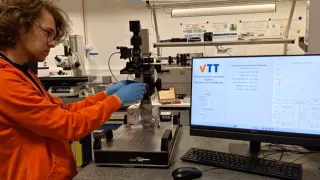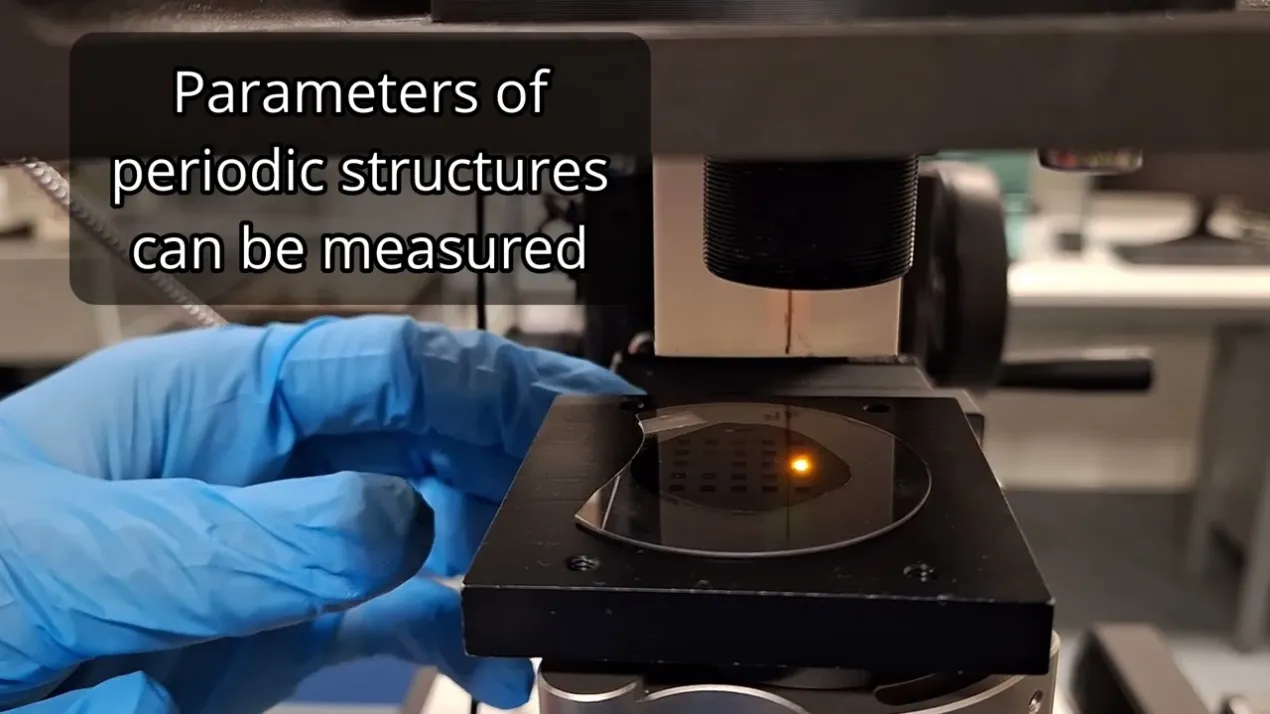Spectral scatterometry is a technique that allows rapid measurements of diffraction efficiencies of diffractive optical elements (DOEs). The method is fast but does not measure the parameters of the sample directly. Hence, the analysis of such diffraction efficiencies has traditionally been laborious and time consuming. However, machine learning can be employed to aid in the analysis of measured diffraction efficiencies. VTT MIKES has developed a novel instrument for providing measurements of multiple measurands rapidly and concurrently using a custom spectral scatterometer and an artificial neural network (ANN). The instrument is suitable for inline quality control in the manufacture of diffractive optical elements.
Spectral scatterometer
The scatterometer hardware and a schematic of the components are show in figure 1. The scatterometer uses a fibre-coupled white LED light source. The light is collimated using a condenser lens (A) and directed through a pair of apertures to an adjustable polarizer (B). Then the polarized light passes through a beam splitter (C), to a microscope objective (D), which focuses the beam to the sample (E), where it is reflected back through the objective (F) into a fibre coupler and a fibre to a spectrometer. The design of the scatterometer allows it to be used also for transmitted beam measurements (G). The measurements are automatically performed employing a custom Python program.

Artificial neural network for spectrum analysis
In our method an artificial neural network is used to analyse the spectrum instead of time consuming inverse calculation. The model is constructed offline in two phases. In the first phase the multi-layer perceptron model is created and trained using the simulated data. The second phase includes the transfer learning where the model will be fine-tuned using experimental data.
In the preliminary training phase, an array of training data is generated by first randomly selecting a simulated spectrum. Then a small amount of random noise will be added to it, so the spectrum would better match the real-world data. Finally, the spectrum is added to the training data set. This will be repeated until the set contain e.g., 1 000 000 spectra.
Applications of the scatterometer
This instrument is capable to provide results for several important measurands needed in industrial quality control of manufacturing photonics components such as gratings, waveguide couplers and diffractive optical elements. The most important measurands are height, pitch, duty cycle and side wall angles of manufactured samples. Thus, the instrument meets the requirements for a new, more accurate inline characterisation method, especially for DOE manufacturing and for the development of virtual and augmented reality glasses.
For customers, we offer customized instrument for quality control and development of ANN data analysis.
If you are interested in this tool or need more information, please feel free to contact us!

Watch our brand new video on spectral scattering!



